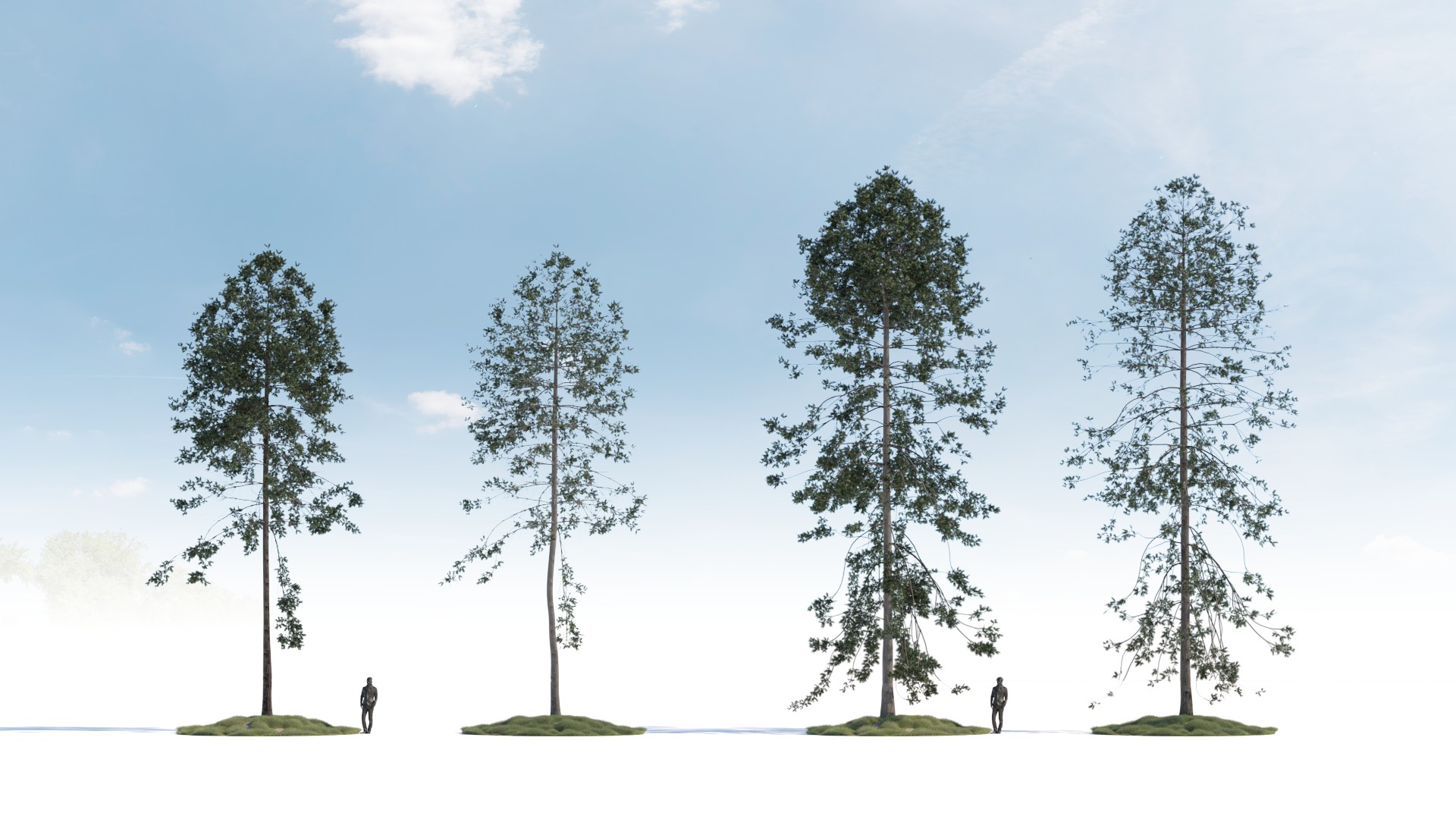


If you’ve ever downloaded families from the internet that have objects created in other programs, you might have noticed that when you insert them and when you render them in Revit, you can see all the facets (polygonal faces) of the object, which makes the object look low quality.
Rhino vray proxy trees professional#
All these modeling details are actually stored in the proxy, so when inserted into Revit, the object will look as detailed, smooth and nice as it looks in the other professional modeling programs.

Modeling/Geometry: Vray proxy objects are usually created in other programs like 3D Max or Maya, which have amazing modeling tools that can create very intricate 3D models. A Revit Vray proxy is also an object that once inserted into Revit, it doesn’t allow much modification, except for the scale and the materials (vrmeshes), but if we compare them to the objects that we can create in Revit, these Vray proxies offer a lot more benefits that we will now take a look at: Here is where Vray Proxies come into play. Having said this, we can definitely create some complex/organic objects in Revit, but this might throw the parametrization out the window to end up with objects that can’t be changed, except for the material or visibility. On top of that, Revit doesn’t offer too many options to map textures onto these organic objects (even if we did manage to model them), so the whole experience can become quite frustrating (to say the least). In Revit, we try to use as many parametric objects as possible, whether they are walls, windows, roofs, furniture pieces, mechanical equipment or any other object, but when it comes to modeling and creating complex or very organic objects like plants or modern coffee makers that have a lot of curved parts, Revit may be a little limiting, not to mention that the parametrization becomes practically impossible. Most people think that Vray proxy Revit families are mainly related to trees, plants, flowers, shrubs and any other landscaping element (Vray RPC Proxies), and while this is very true, there are many other reasons and times in which these vray proxy files can be used in Revit.īefore getting a bit more specific, let’s start by saying that any object can actually be a Vray Proxy (not only plants), but do we need all objects in our Revit projects to be Vray proxies? The answer to that is definitely no, but we will certainly use them to dress up our project and to create more photoreal renders of our projects while keeping our workflow very smooth. Vray proxies, whether vrmeshes or vrscenes, are a specific file format only readable by Vray that offers a lot of advantages when it comes to rendering and file handling, so if you have a Vray licence or you are planning on getting one, keep reading since we will discuss the advantages of using them in your Revit projects. Tired of using Revit families that have objects created in other programs that don’t have a way to assign materials to? Tired of having faceted objects that don’t look photoreal in your Revit projects? Tired of not being able to model high resolution objects in Revit? Worry no more since Vray proxies in Revit are the solution to all these issues. Revit Vray Proxies (vrmesh and vrscene files).


 0 kommentar(er)
0 kommentar(er)
